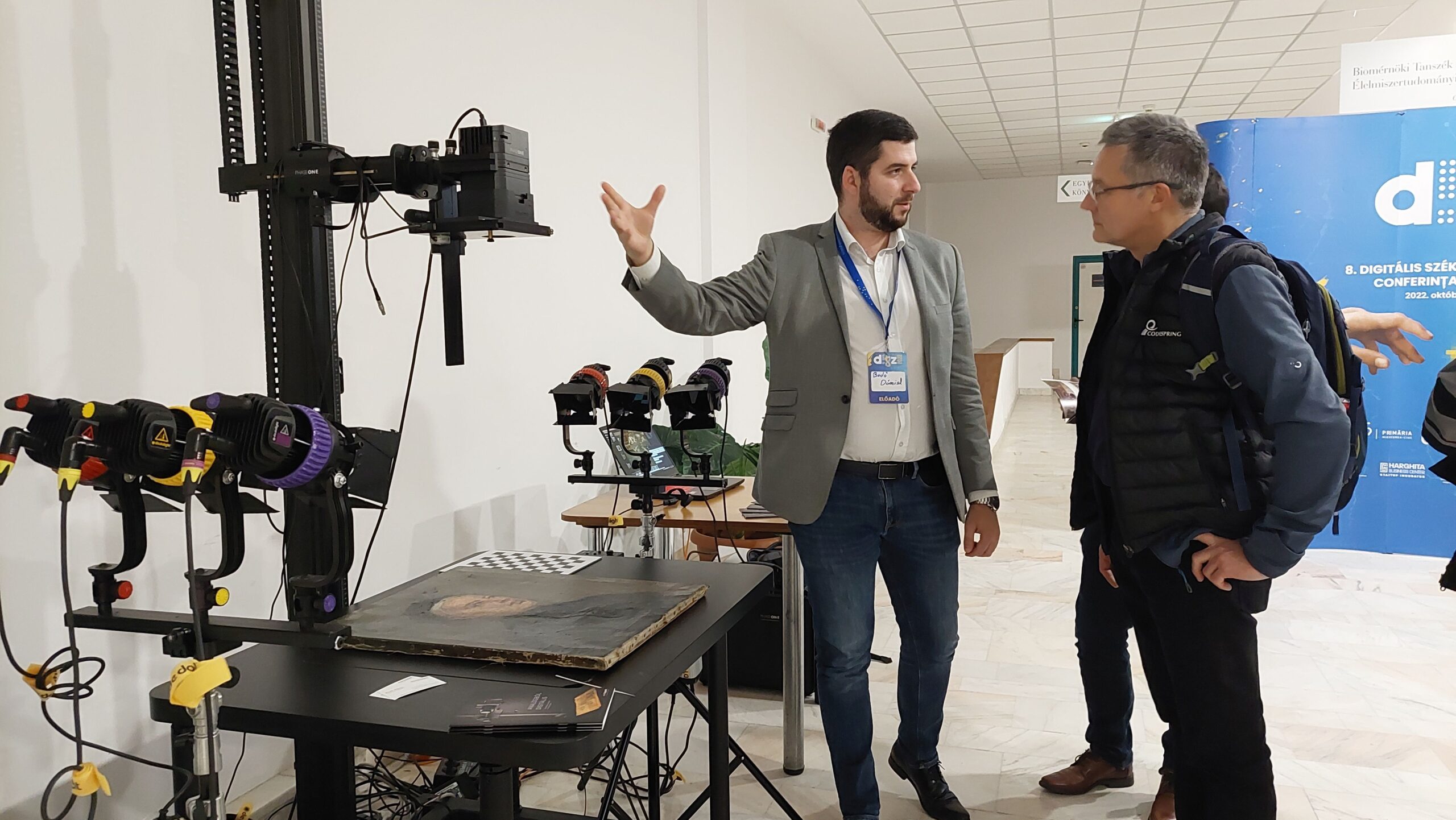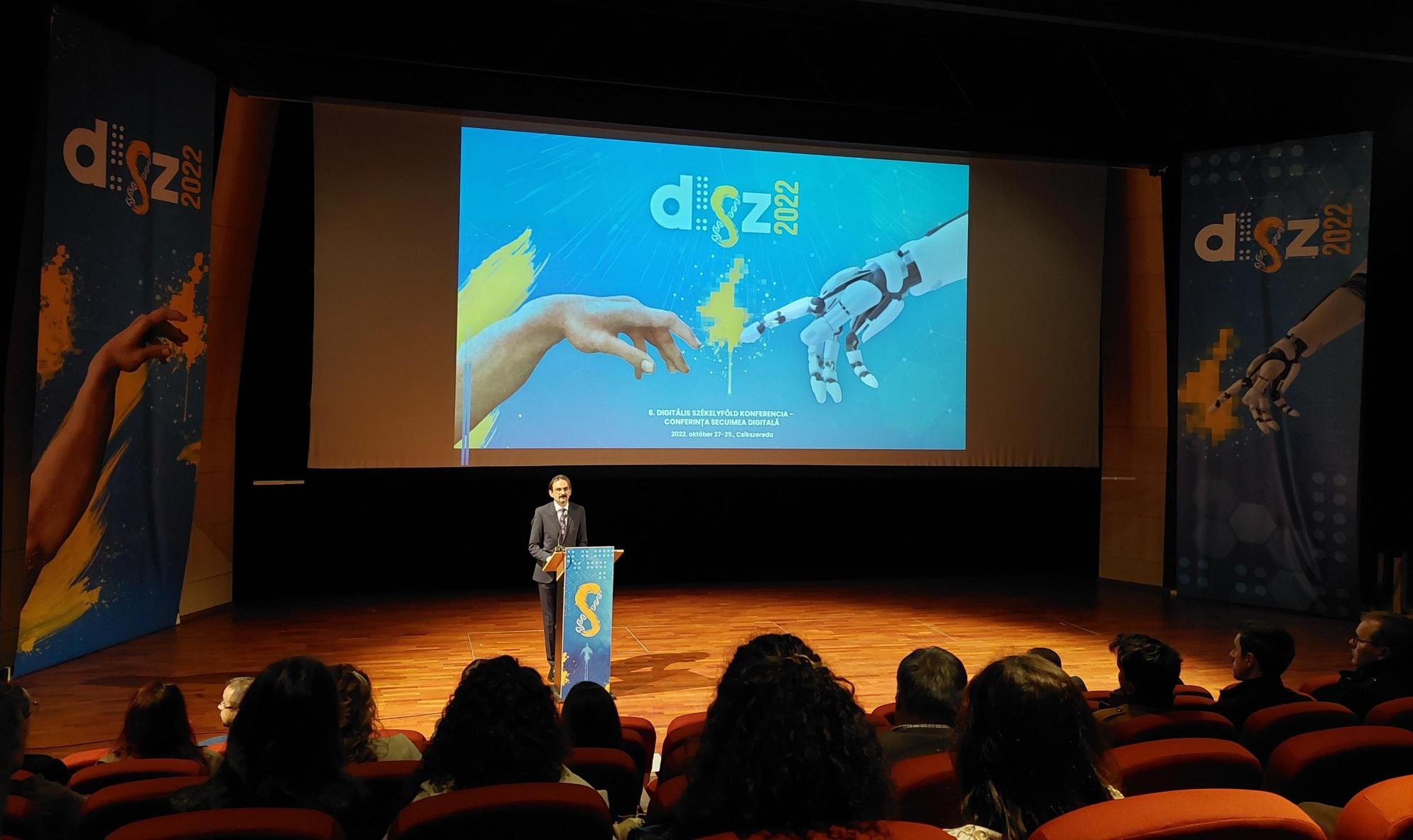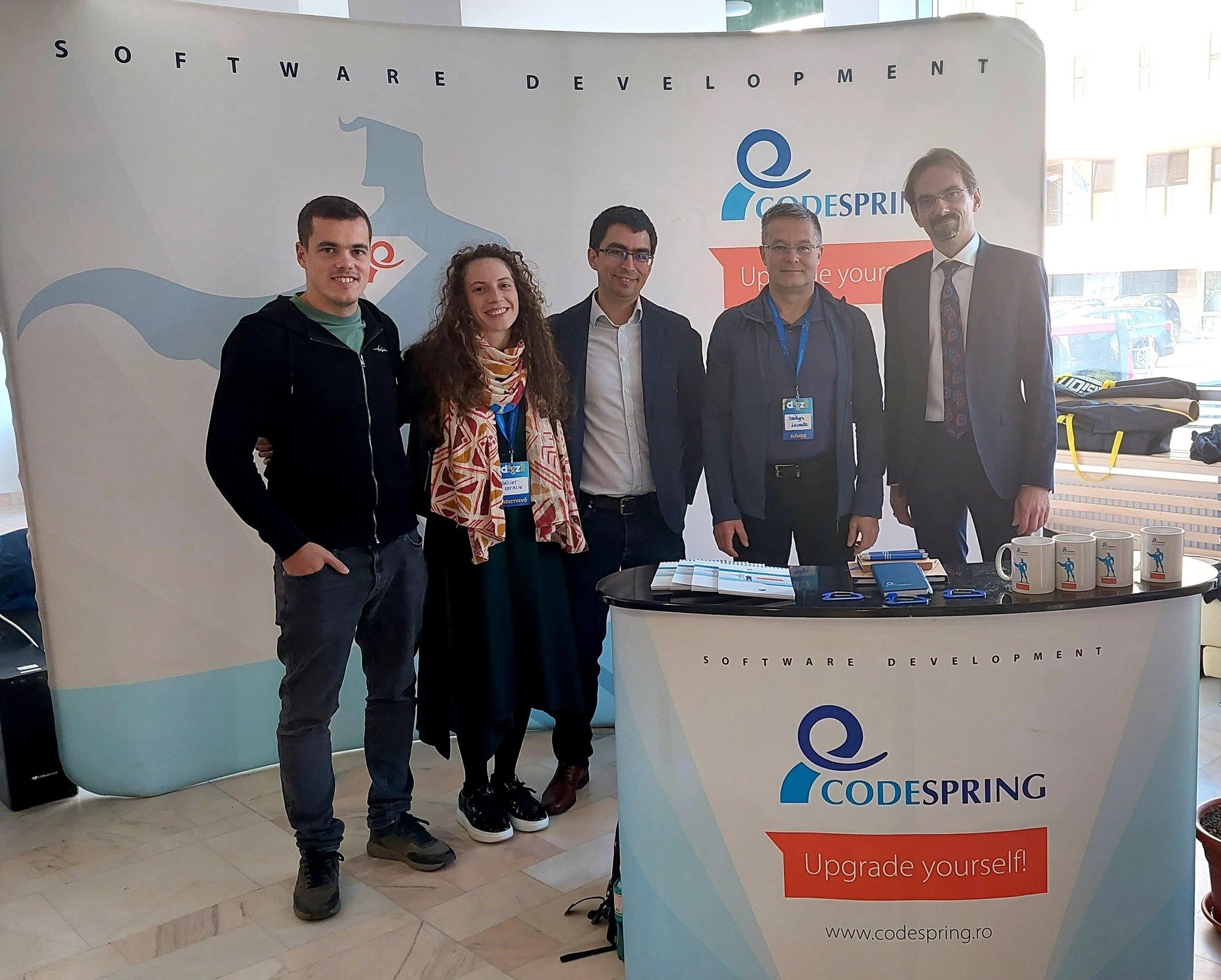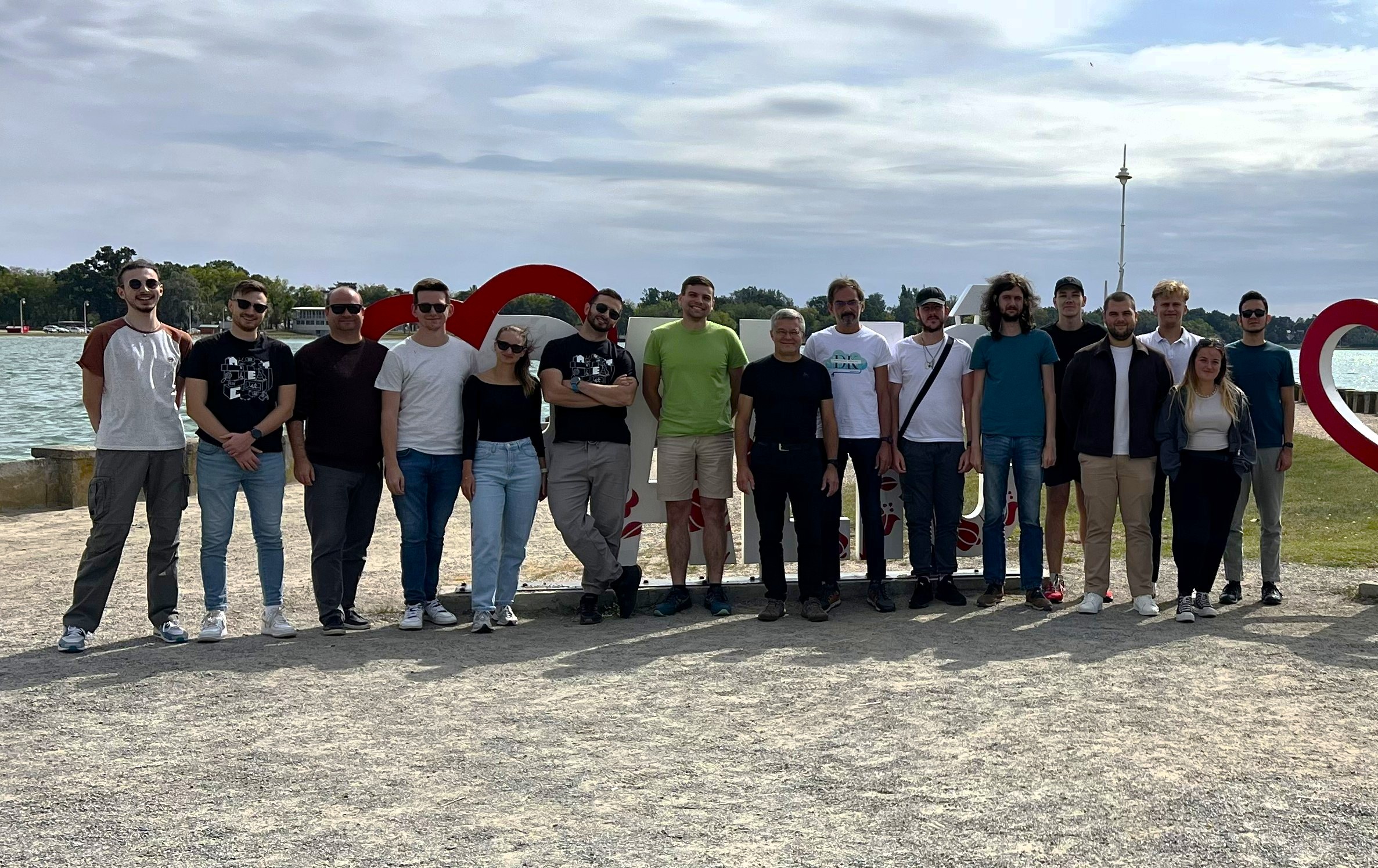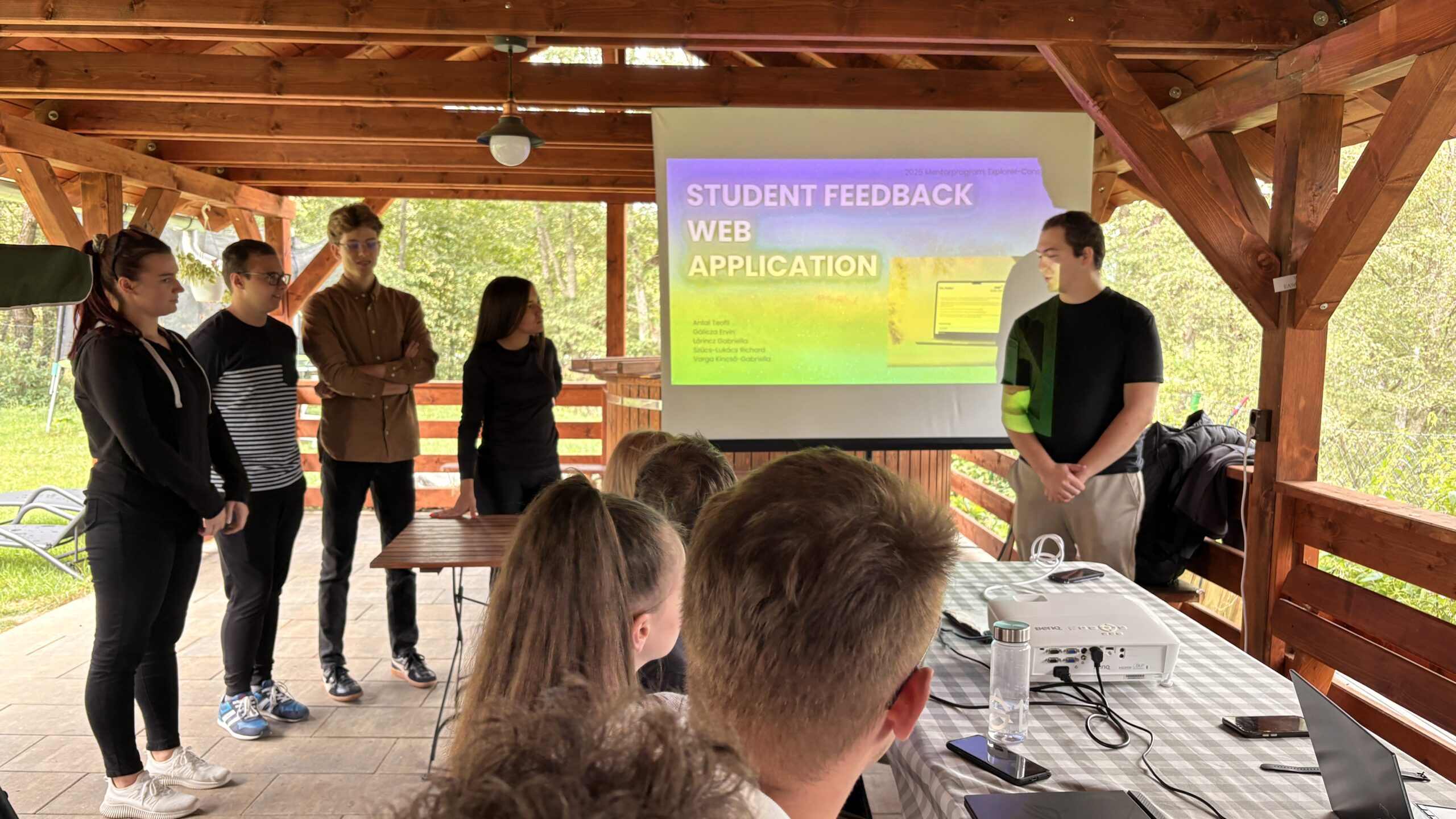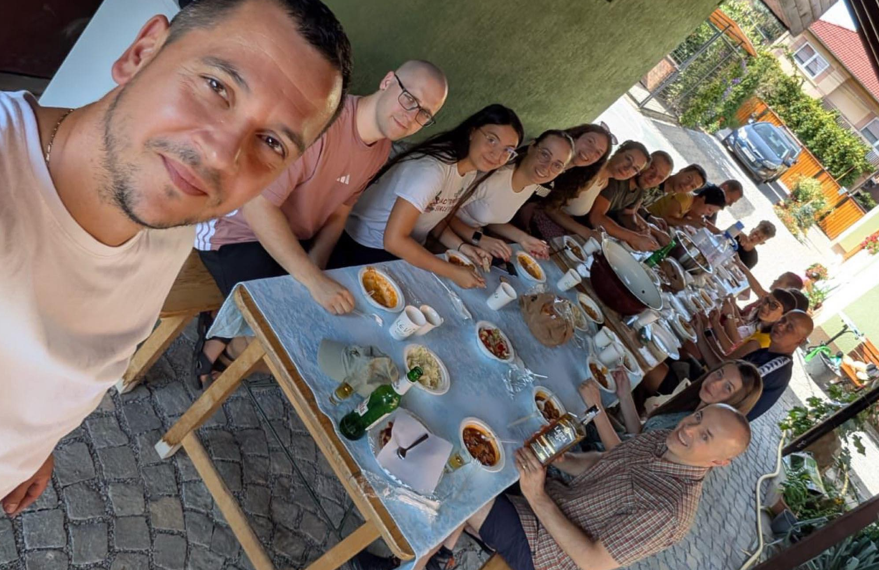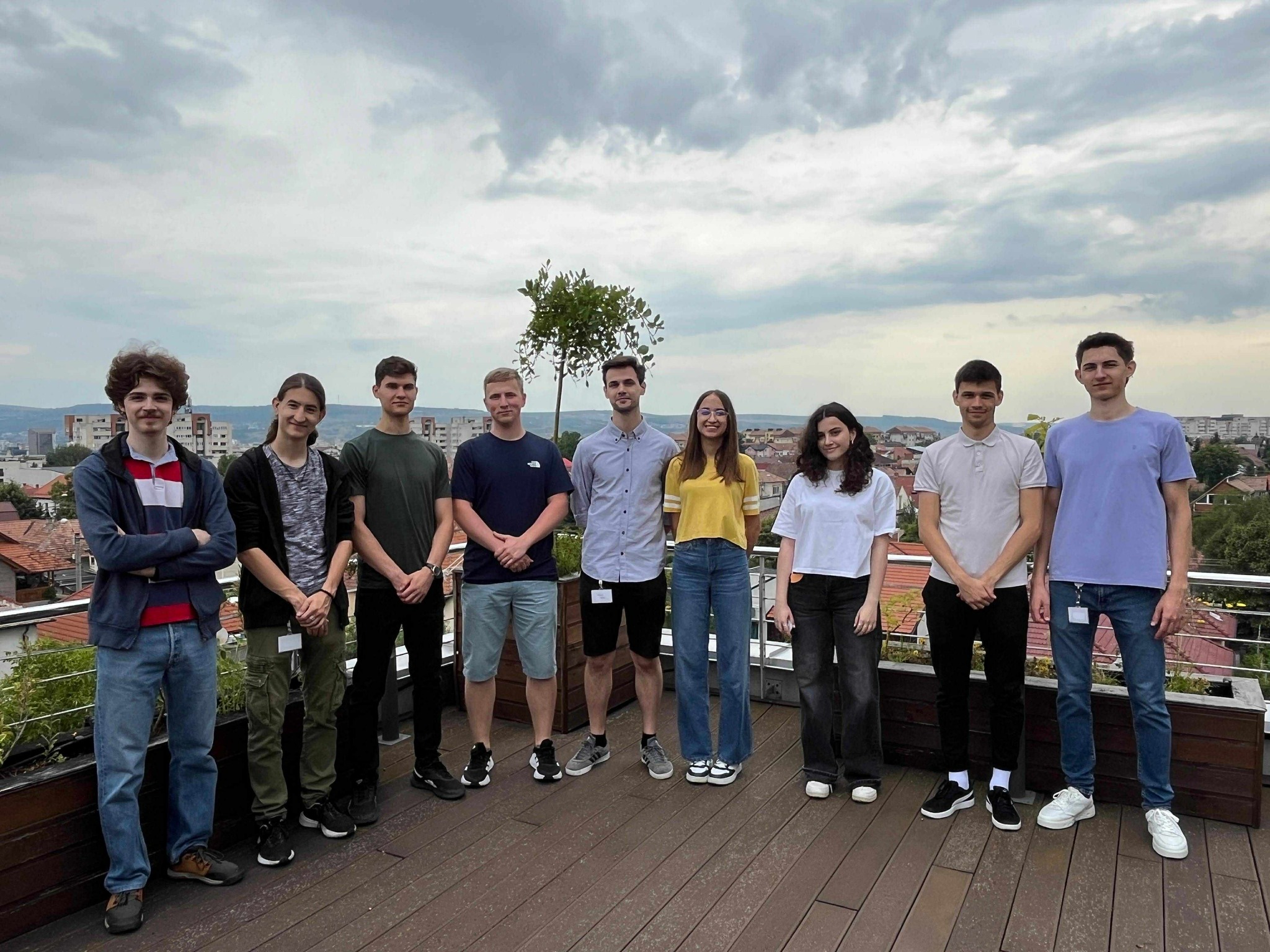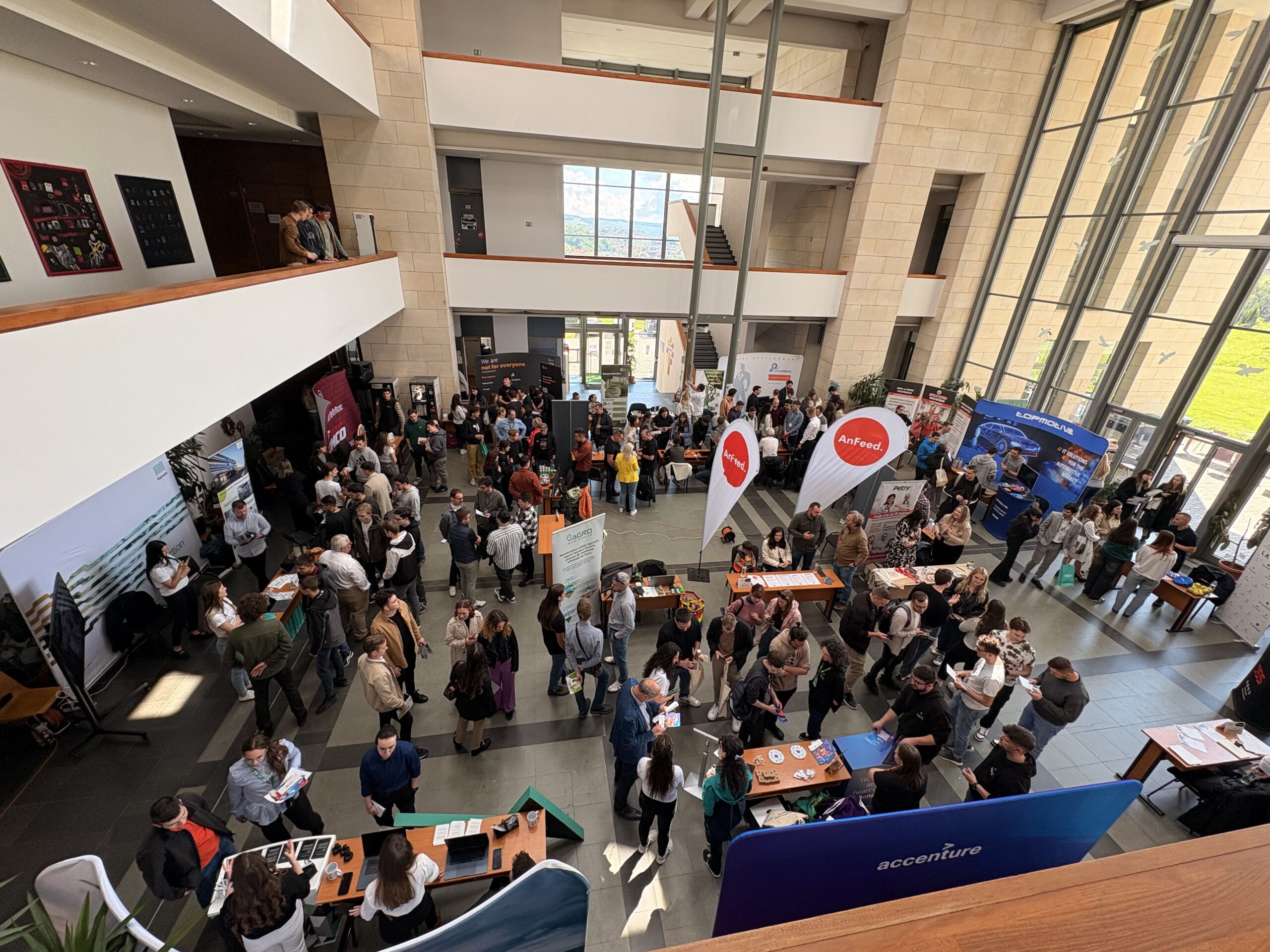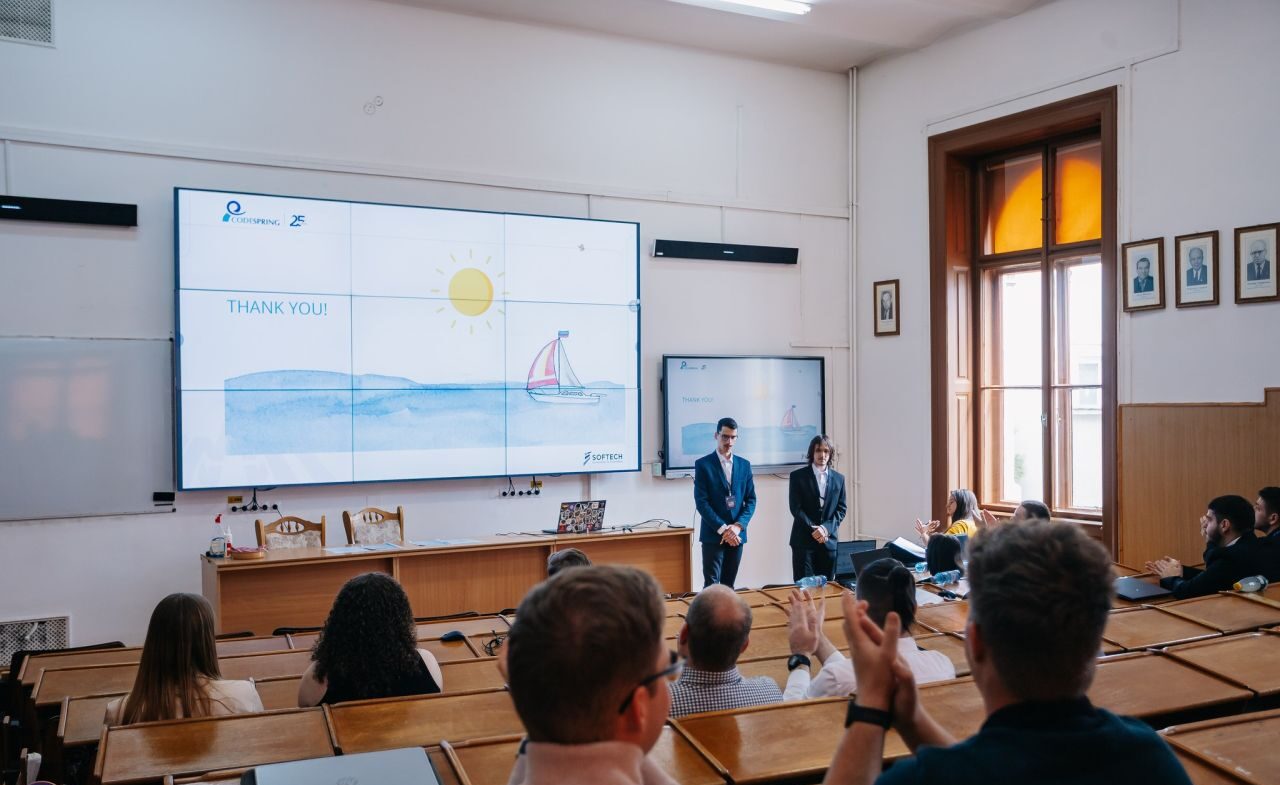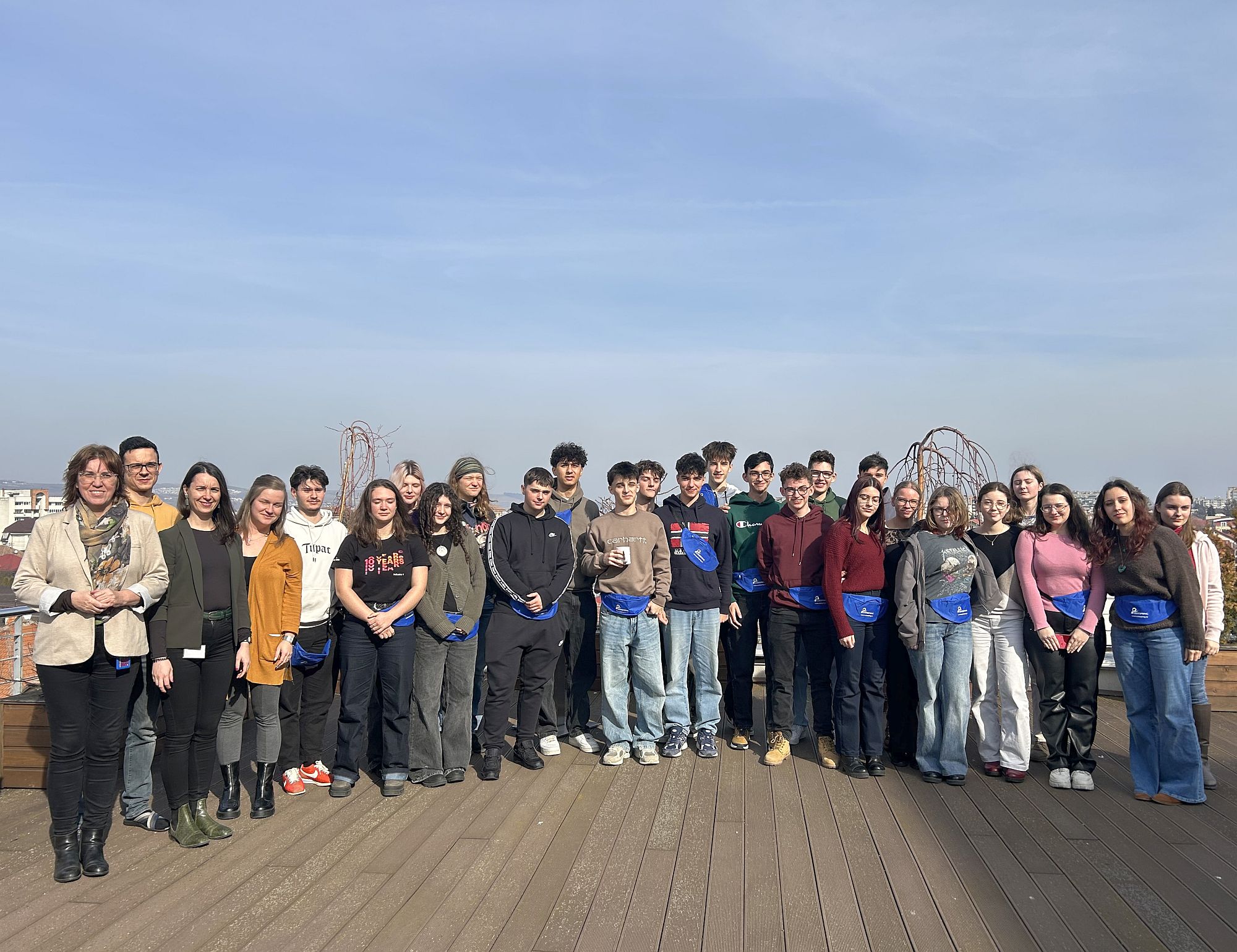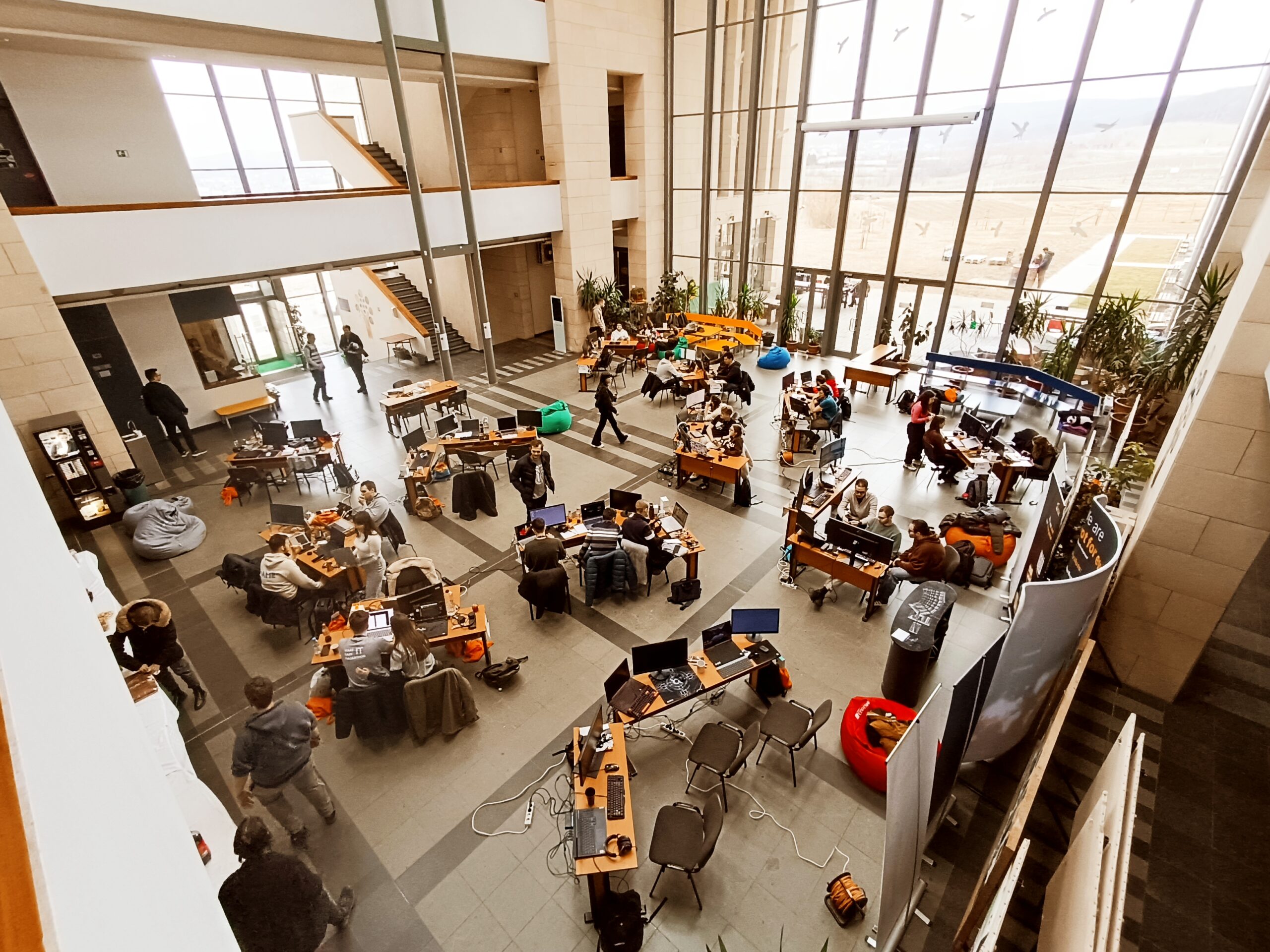AI and Arts, the multiple ways of using blockchain technology, possibilities of collaboration between IT universities and tech companies –these are just a few topics that were discussed during the 8th D!SZ Conference held in Miercurea Ciuc (Csíkszereda) from 27th to 29th October. Codespring|Softech used to support this tech event, and our colleagues were happy to attend it, to present our company and some of our projects.
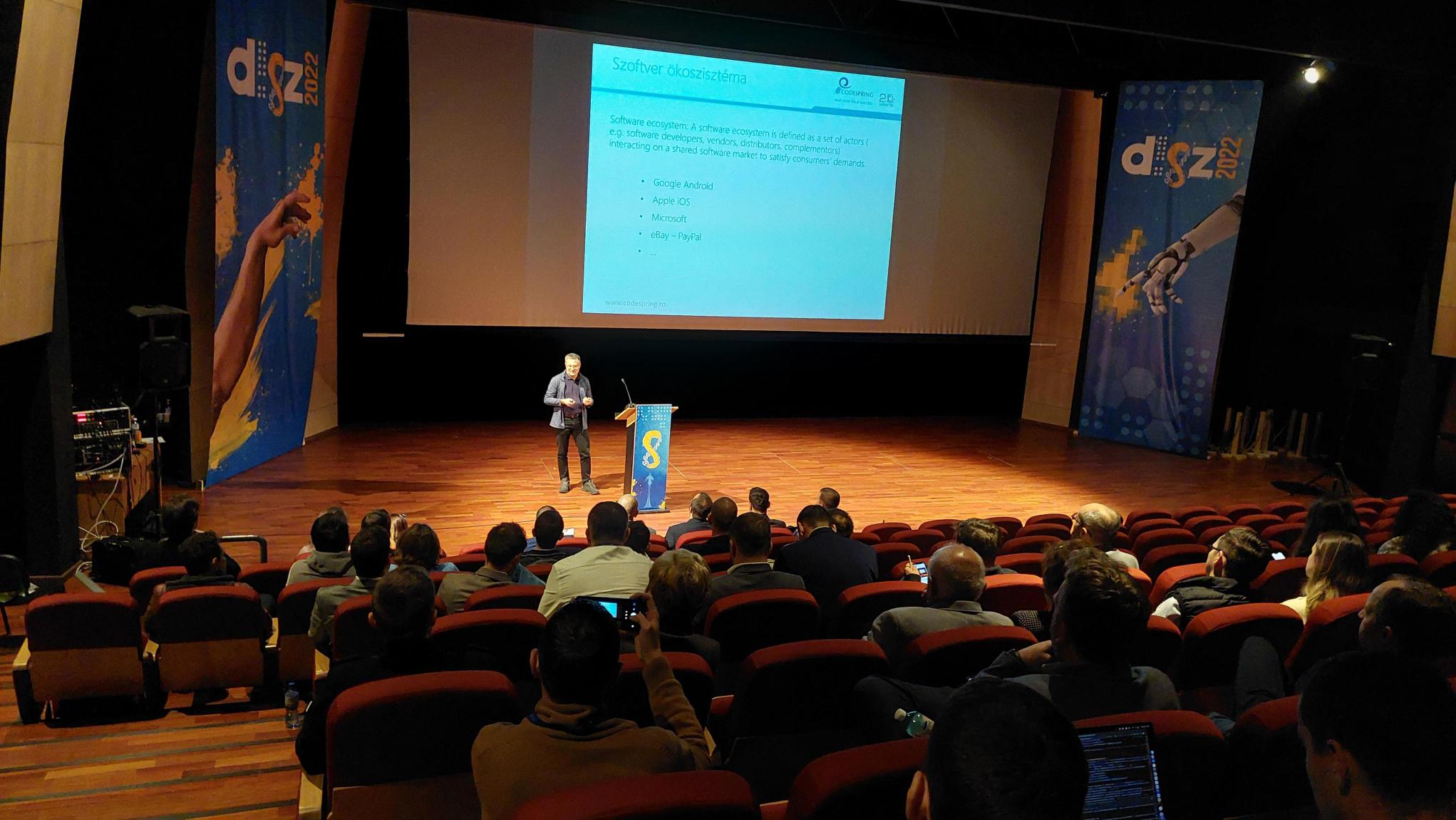
with other IT companies, organisations, public institutions, universities and potential new colleagues/partners. That’s why we were happy to attend the 8th edition of D!SZ Conference organized by IT Plus Cluster in Miercurea Ciuc (Csíkszereda).
During both days of this tech event, attendees could visit the Codespring|Softech company booth in the hall of Sapientia University, offering giveaways and several games, including a journey in virtual reality. Our colleagues also presented some of our company’s main ideas and several apps developed by the mentees of Codespring Mentoring Program.
New Horizons with AI Technology
As Simon Károly PhD, president of IT Plus Cluster and colleague at Codespring | Softech stated in his welcome speech, ‘AI became part of our everyday life’. During the conference, there were many speeches about the way we use AI nowadays and how it can generate breakthroughs in different fields, from medical science to text analysis or even arts. Also, all of the invited speakers agreed that AI and Machine Learning is “blind” without correct data input which needs human contribution, so these technologies will always require human expertise and other skills & competences.
Art & Tech and Codespring
The connection between AI and Arts was one of the main topics of D!SZ Conference. We got insight into several ways of using NFT-s – even by national financial institutes –, and into the world of intelligent image generation software. We also heard about the process of digitizing books and paintings, about the animation creating software and a lyrics analysing project carried out by AI. The Transylvanian IT Plus Cluster, in collaboration with the Szekler Museum of Ciuc, managed to set up a really special exhibition of AI-Generated Artworks on different topics, created in the style of several famous painters.
The Software Showcased by Codespring|Softech Team
Linked to this topic, two students involved in Codespring Mentoring Program presented the project called Line Artist, a software that transforms digital images into line-art drawings, with the help of Line-us Robot Arm. We were also happy to welcome on stage more colleagues of Codespring | Softech: Erik presented the AR (Augmented Reality) app called ARmore, developed by their team of students during their mentoring program a few years ago. Codespring| Softech’s project manager, Tas introduced some very useful software to the audience: Kafka and Kafka Streams – impressive by the huge amount of real time data processing.
The Ecosystem Related to Codespring|Softech
Another important topic of the 8th D!SZ Conference was that regarding teaching and recruiting the new generation of IT professionals, problems the Transylvanian and Hungarian IT universities and tech companies have to deal with. Szélyes Levente, CEO of Codespring | Softech briefly presented the 25 year history of our organically growing company and the high-quality CS Mentoring Program through which we are part of a great functioning “ecosystem”, with active interactions between the company and its clients, IT students and professionals, the universities of the region, public institutions, professional associations and other economic agents.
Codespring MP’s impact on the future
This idea was more specifically discussed during a round-table meeting organized for the leaders of IT universities in Transylvania, Romania and Hungary and other stakeholders of the tech industry. This time Szélyes Levente stated that thanks to Codespring Mentoring Program our company has a close cooperation with the universities of the region, and our dedicated mentors help the students in a way to effectively flesh out the university curricula. In addition, many of the students become IT professionals and also mentors or teachers of the next generation, this way they can have a great impact on the future of education in Informatics.
A best practice of cooperation
Charaf Hassan PhD, leader of BME Faculty of Electrical Engineering and Informatics shared the cooperation model they practice in their institute: IT companies finance the research projects of the university they are interested in, and they can also suggest research topics. And what’s more, they are involved in the dual education system of the institute: the 10-months internship they require is extremely useful both for students and for the companies. This method could be put into practice also in Transylvanian education system.

